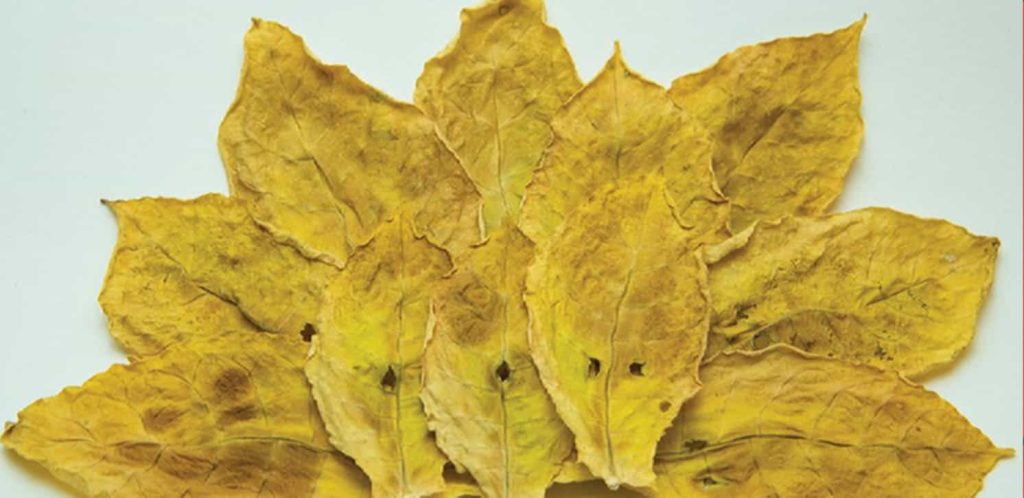
Oriental tobacco, also known as Turkish tobacco, has a rich history and unique characteristics that set it apart from other tobacco varieties. Its smaller leaves, sun-curing process, and distinct flavors have made it a sought-after ingredient in pipe blends and cigarettes for centuries. As a tobacco expert, let’s explore the fascinating world of Oriental tobacco, its origins, cultivation methods, and the alluring flavors that continue to captivate smokers and blenders alike.
The Unique Cultivation Process
Unlike other tobacco varieties, Oriental tobacco is grown in a unique way. The plants are closely spaced, resulting in smaller, more flavorful leaves. This close spacing also encourages the growth of a higher number of leaves per plant, contributing to the overall yield.
The Sun-Curing Technique
After harvesting, the leaves of Oriental tobacco are sun-cured, a process that further enhances their flavor and aroma. This traditional method of curing, which involves drying the leaves in the sun, gives Oriental tobacco its distinctive characteristics.
The Distinctive Characteristics of Oriental Tobacco
Oriental tobacco is known for its unique characteristics, which set it apart from other tobacco varieties.
The Smaller Leaves
The leaves of Oriental tobacco are smaller than those of other varieties. This results in a higher concentration of flavors and aromas, making Oriental tobacco a sought-after ingredient in pipe blends and cigarettes.
The Unique Flavors and Aromas
Oriental tobacco is renowned for its unique flavors and aromas. These can range from sweet and floral to spicy and earthy, depending on the specific variety and the curing process.
The Role of Oriental Tobacco in Pipe Blends
Oriental tobacco plays a crucial role in pipe blends, contributing to their complexity and depth of flavor.
The Art of Blending
Blending is an art form in the world of pipe smoking. The right blend of tobaccos can create a symphony of flavors and aromas, and Oriental tobacco often plays a starring role in these blends.
The Impact on Flavor and Aroma
The unique flavors and aromas of Oriental tobacco can significantly impact the overall flavor and aroma of a pipe blend. Its inclusion can add depth, complexity, and a touch of exoticism to the smoking experience.
The Modern Popularity of Oriental Tobacco
In recent years, Oriental tobacco has seen a resurgence in popularity, particularly among pipe smokers.
The Resurgence in Pipe Smoking
The art of pipe smoking has seen a resurgence in recent years, with a new generation of smokers discovering the pleasures of this traditional pastime. Oriental tobacco, with its unique flavors and aromas, has played a significant role in this resurgence.
The Appeal to Modern Smokers
Modern smokers are increasingly drawn to the unique characteristics of Oriental tobacco. Its distinctive flavors and aromas, coupled with its rich history and unique cultivation process, make it a fascinating and appealing choice for today’s discerning smoker.
The Future of Oriental Tobacco
Despite the challenges facing the tobacco industry, Oriental tobacco continues to hold a special allure for smokers and blenders alike.
The Challenges and Opportunities
Like all tobacco varieties, Oriental tobacco faces challenges, including changing regulations and shifting consumer preferences. However, its unique characteristics and the growing interest in pipe smoking present opportunities for continued growth and popularity.
The Continued Allure of Oriental Tobacco
Despite these challenges, the allure of Oriental tobacco remains strong. Its unique flavors and aromas, its rich history, and its role in the art of pipe blending ensure that it will continue to captivate smokers and blenders for years to come.
Statistics:
China is the largest producer and consumer of tobacco in the world, with more than 300 million smokers, nearly one-third of the world’s total https://www.who.int/china/health-topics/tobacco
. In the United States, 7.1% of Asian American adults smoked in 2018, compared to 15% of non-Hispanic white, 14.6% of non-Hispanic black, and 9.8% of Hispanic adults https://truthinitiative.org/research-resources/targeted-communities/tobacco-use-asian-american-community
.
FAQs:
- What are the main regions where Oriental tobacco is grown? Oriental tobacco is mainly grown in eastern Mediterranean and Asian regions such as Turkey, Greece, Bulgaria, Macedonia, Syria, Lebanon, Italy, Yugoslavia, Romania, and Southeast Asia https://patents.google.com/patent/WO2019193580A1/en.
- What are the unique characteristics of Oriental tobacco? Oriental tobacco is known for its smaller leaves, sun-curing process, and distinct flavors and aromas that can range from sweet and floral to spicy and earthy https://patents.google.com/patent/WO2019193580A1/en.
- What is the role of Oriental tobacco in pipe blends? Oriental tobacco plays a crucial role in pipe blends, contributing to their complexity and depth of flavor https://patents.google.com/patent/WO2019193580A1/en.
- Why is Oriental tobacco popular among modern smokers? Modern smokers are increasingly drawn to the unique characteristics of Oriental tobacco, its distinctive flavors and aromas, and its rich history and unique cultivation process https://patents.google.com/patent/WO2019193580A1/en.
- What are the challenges and opportunities for the future of Oriental tobacco? Oriental tobacco faces challenges such as changing regulations and shifting consumer preferences. However, its unique characteristics and the growing interest in pipe smoking present opportunities for continued growth and popularity https://patents.google.com/patent/WO2019193580A1/en.
Books:
One book on the subject of Oriental tobacco is “The Position of Oriental Tobacco in World Production and Trade (Classic Reprint)” by James W. Birkhead https://www.amazon.com/Position-Oriental-Tobacco-Production-Classic/dp/1390354903
.